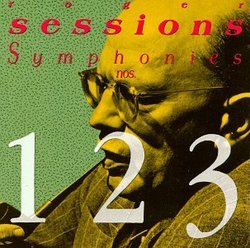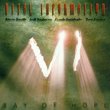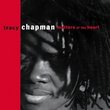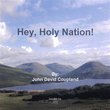| All Artists: Sessions Title: Symphony 1 2 & 3 Members Wishing: 0 Total Copies: 0 Label: Composers Recordings Release Date: 12/14/1993 Genre: Classical Styles: Historical Periods, Modern, 20th, & 21st Century, Symphonies Number of Discs: 1 SwapaCD Credits: 1 UPC: 090438057325 |
Search - Sessions :: Symphony 1 2 & 3
 | Sessions Symphony 1 2 & 3 Genre: Classical
|
Larger Image |
CD DetailsSimilar CDs
|
CD ReviewsSessions and his Art D. Castillo | 12/23/1999 (4 out of 5 stars) "My first introduction to Roger Sessions' music was his First Symphony on this recording. I found it while browsing around in the library. The first movement was a mind-blower. Instantly accessible, great rhythms, and good and loud. I wondered what other wonders were on this CD. Well, my first impression was that it was akin to white noise. I love Lutoslawski and Penderecki and it seemed to be noise. However, I gave it a second shot, and a third, and so on and the OTHER wonders of his music became apparent. Get this CD, give it a chance, and it'll grow on you. I have most of his symphonies and have several other pieces and I'm going to get more soon." First Recording of Sessions Symphonies mahlerii@aol.com | Richfield, MN | 04/26/1999 (5 out of 5 stars) "I have always loved Sessions' music and this CD has first recordings of these works. In the First, the Japan Philharmonic fit themselves well, but the sound is not so hot. (How about it, Neeme Jarvi/Detroit Symphony?) Mitropoulos' 2nd has a certain authority about it, but the sound here is tinny also. It is easier to hear the Blomstedt recording of this, which also has a wonderful performance of it on a London CD. This is well worth hearing though. The price of the CD, however is worth it for the 3rd. Buketoff was a staunch champion of unknown 20th century works. This recording came out in 1968 and on CD it still sounds very good. We do need more modern recordings of these works, but this will fill the bill in the meantime. Sessions deserves all of his works recorded in good quality digital sound." The Symphony Schoenberg Never Composed Discophage | France | 11/07/2007 (5 out of 5 stars) "His two Chamber Symphonies notwithstanding, Schoenberg never composed a symphony in the accepted sense (although the 5 pieces opus 16 and Variations opus 31 are great orchestral compositions in their own right), so we can be grateful that Sessions did in his stead. It did take the American composer three symphonies to warm up to it, as testified by the present disc.
Don't take this as a sneer. While I find the Schoenbergisms striking, all the way to the twists and turns of orchestration, Sessions' Third Symphony is a great work, dramatic and powerful, magnificently orchestrated, full of ear-catching musical events. Schoenberg would have no reason to blush had he composed it himself. For the rest, the disc offers a fascinating presentation of the composer's evolution to his Schoenbergian self, starting with the early and, to my ears, not really characteristic First (1927). It is full of things Roy Harris might have composed, from the menacing and triumphant, pre-Bernstein bouncy brassy statements of the beginning to the second, lyrical theme of the first movement with the plangeant tone of english horn and oboe (2:47), and the "Scotch"-souding theme which opens the sarcastic finale, which at times also seems strongly indebted to Stravinsky's Petrushka. To me the most embarrassing is the pastoral and dreamy second movement, with its tritely sentimental oboe-clarinet and wailing violin melodies. But granted, the Symphony was written five years before Harris' great first statement (the Symphony 1933 - Harris had abandonned an earlier essay begun in the mid-twenties, and his Symphony "American Portrait" is from two years after Sessions' first), and it is a tribute to Sesssions that this was his point of departure, not of arrival. In the almost twenty ensuing years, Sessions matured tremendously. The Second Symphony (1946) is a work of great power, thorny, angular, highly dissonant. In it I hear echoes of Berg's Wozzeck (try at 2:55 in the first movement) and, in the short Scherzo (2nd movement) and some passages of the finale (after 2:20), traces of Bartok, in particular the sardonic scherzo passages of Miraculous Mandarin or Concerto for orchestra. The powerful forward drive of the finale harks back to the earlier Sessions, but it is more angular and dark. But the most remarkable thing I find is that, though the wailing violin then oboe are there again (at 1:40 in the first movement, and in the slow one), the effect is absolutely not sentimental, but rather evocative of a lost soul (some of Henze's early works come to mind). This is possibly because it is integreated in an architecture and a language that are not sentimental - or maybe because of the way the New Yorkers under Mitropoulos' baton phrase it: I don't get the same feeling with Blomstedt (Harbison: Oboe Concerto, Symphony No2; Sessions: Symphony No2). The emotional heart of the Symphony is its slow "Adagio tranquillo ed espressivo" (3rd movement), a threnody for Franklin Roosevelt, who had died a few months earlier. There, the intense, atonal lyricism of Berg and, already, Schoenberg looms large, together with their art of chamber-like orchestration. There weren't many orchestral works as original as this Symphony to be composed in those years - maybe Elliott Carter's Symphony (American Composers Orchestra), and some works of Wallingford Riegger (Riegger: Symphony No3, Romanza, Dance Rhythms, Music for Orchestra, Concerto for Piano and Woodwind Quintet, Music for Brass Choir, Movement for Two Trumpets Trombone and Piano, Nonet for Brass, Wallingford Riegger: Variations / Sym No.4). In general, what makes the Second and Third Symphonies works of enduring interest is not only their wealth of ideas, but also that (unlike the first, and so many other American symphonies written in those years - and still today), they never resort to the most immediately easily graspable and immediately appealing solutions. This well-filled (74:22) CRI disc collates recordings from various dates - and regrettably CRI doesn't provide them. The First came out before 1961 on CRI 131 with William Bergsma's "Music on a Quiet Theme" and Russell Smith's "Tetrameron". It has some tape hiss but clear, stero sound. Mitropoulos' recording was awarded the 1949 Walter Naumburg Foundation award and came out in 1950, both on 78rmp and on LP - that's how old it is. I don't have the score so the following comment is gut feeling more than fully informed appreciation, but unlike the previous reviewers I tend to prefer it to the more recent Blomstedt/San Francisco. The latter's sonics are evidently very superior, more spacious (in tempo as well), smooth and comfortable, but I find that the very rawness of Mitropoulos and the New Yorkers suits the music well, and for all its harshness and lack of depth the mono sound has more presence (Blomstedt's orchestra is so spaciously recorded as to sound somewhat distant). The Third Symphony came out in 1968 on RCA LSC-3095 with Benjamin Lees' Concerto for String Quartet and Orchestra. This is an essential disc for the admirer of Sessions, and anyone interested in the history of the American symphony. " |

 Track Listings (11) - Disc #1
Track Listings (11) - Disc #1

